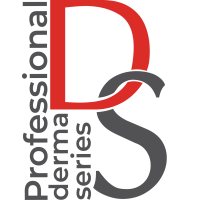Spring is the awakening of nature, the flowering of plants. But for many, springtime can mean the beginning of seasonal allergies, and accordingly, manifestations of allergic dermatoses. Dermatologists note that seasonal allergies can manifest themselves differently on the skin, and it is important to know how to properly care for the skin during this period.
WHAT IS A SEASONAL ALLERGY AND HOW DOES IT AFFECT THE SKIN
The most common causes of spring allergies are tree and grass pollen, sap of some plants, mold and mushroom spores, dust, and insects.
Seasonal allergy, also known as hay fever or pollinosis, is caused by the body’s reaction to plant pollen. When pollen enters the body through the mucous membranes of the nose, eyes, or skin, the immune system reacts by releasing histamine, which is the cause of various familiar allergy symptoms, such as sneezing, nasal congestion, watery eyes, and conjunctivitis. For the skin, seasonal allergies can lead to the following manifestations:
- Skin rashes and itching
- Redness, swelling and irritation of the skin
- Dryness and flaking of horny scales
Skin allergy symptoms can last up to 14-28 days. These conditions can cause long-term damage like scarring and prolonged skin sensitivity.
INFLUENCE OF ENVIRONMENT AND INTERNAL FACTORS ON SKIN REACTIVITY
According to the latest statistics, allergic reactions have increased by 12% over the past 5 years. The reactivity of the skin is directly related to the body’s environment:
- Environmental pollution: plant pollen mixing with dust, exhaust gases, and other harmful substances, becomes a more potent allergen. Therefore, the most allergic people are observed among urban residents.
- Climatic conditions: global warming causes early flowering, and in some regions, repeated flowering of plants. More frequent contact with allergens directly increases cell sensitization. Excessive irritation amplifies skin reactivity, heightening its sensitivity.
- Weather conditions, such as temperature fluctuations, active UV radiation, and seasonal changes, affect the nerve endings externally, leading to increased skin reactivity.
In addition to external factors, the condition of the skin is affected by changes in the body’s internal environment (endocrine, nervous system, etc.), fluctuations in the level of hormones in tissues.
The skin is a hormone-dependent organ that reacts to stress in the first place. Cortisol is a stress hormone, similar to allergens, it increases the reactivity of the skin. This means that bioactive compounds will be released faster and more intensively than in normal skin. The release of inflammatory mediators, interleukins, histamine and other factors will occur instantly even under the influence of a subthreshold stimulus. This leads to cross-allergic skin reactions.
CROSS ALLERGIC REACTIONS
Cross allergy is a specific reaction of the body to several allergens similar in structure and function. The immune system recognizes proteins in different substances (pollen, food, house dust) as similar. That is, during such a period, the skin can react unpredictably to any component, even one that has never caused irritation before.
Cross reactions can occur between plant pollen and food, inhaled allergens of household or animal origin and food, between food and latex.
Under certain conditions (asthma, atopic dermatitis, pollinosis), the risk of developing allergic reactions, including cross reactions, increases. It is believed that up to 80% of all cases of food allergy in adults are preceded by sensitization to airborne allergens (pollen, house dust mites).
The risk of cross reactions also increases with the internal consumption of allergens. Seasonal allergies can be aggravated by eating certain foods, such as fruits with a high pollen content (e.g. apples, pears, peaches) or certain vegetables (e.g. carrots, celery). You should also be careful with some types of nuts, such as hazelnuts. It is recommended to reduce their use during the flowering period.
HOW TO PROPERLY CARE FOR THE SKIN DURING THE ALLERGY PERIOD?
It is necessary to correct the external manifestations of allergic reactions with topical products that reduce the sensitivity and reactivity of the skin.
- Biotechnological complexes
DEFENSIL is the most active high-tech complex. Thanks to the 3 plant extracts included in its composition, it instantly relieves itching and other allergic manifestations on the skin. It decreases the permeability of the vascular wall, reducing plasma perspiration into the intercellular space of the dermis. Strengthens the barrier function of the skin.
In Anti-Red Calming Serum from Reneo Cosmetics, the effect of DEFENSIL is enhanced by the herbal complex PENTAVITIN and bisabolol. Regular daily use of the serum allows you to reduce the reactivity of the skin, while simultaneously moisturizing and improving cell regeneration.
- Peptides
A biomimetic approach will work perfectly with excessive sensitivity of skin receptors. For example, palmitoyl tripeptide-8 blocks afferent fibers and the release of inflammatory mediators in the skin. It reduces the reactivity of the skin not only to allergens, but also to UV radiation, chemical and mechanical irritants.
Calming Light Cream contains Palmitoyl tripeptide-8, a high-tech peptide along with plant extracts and encapsulated tocopherol, which work together to soothe the skin. The cream has an anti-inflammatory and antioxidant effect, it controls the sensitivity threshold of the skin.
- Plant extracts
Plant extracts have an active soothing and reducing effect on all manifestations of skin irritation. Licorice root extract stands out as one of the most potent agents for reducing all inflammation mediators, including those involved in allergic reactions. It contains a high concentration of rutin, thanks to which the permeability of the vascular wall decreases and its strength increases. In addition, the extract improves microcirculation in the tissues, reduces swelling and the flow of nutrients to the damaged area, which accelerates the recovery process.
Conductive Calm-Booster has a high concentration of licorice root extract for device-based procedures. Furthermore, this booster also contains horse chestnut extract, which enhances blood vessel function more effectively, reducing tissue swelling commonly associated with allergic reactions of any origin.
It is very important to use regenerating components such as panthenol, which is also the ingredient of the booster, for the rapid restoration of skin cells.
Regular use of Conductive Calm-Booster during seasonal allergies, coupled with daily application of Anti-Red Calming Serum and Calming Light Cream in your home skincare routine, can effectively regulate cell sensitivity. This regimen helps in controlling skin reactivity and shields against unexpected overreactions.
Thus, the Reneo Cosmetics product line includes products containing innovative components, biomimetic peptides, which have a purposeful, targeted and all-encompassing effect on cell receptors, reducing their reactivity.
Read also:
- Reaction to creams – is the cosmetic product always to blame?
- Hypersensitivity of the skin: How to get rid of discomfort?
See also: educational video “Sensitive skin syndrome: pathogenesis, clinical picture, comprehensive correction program“



